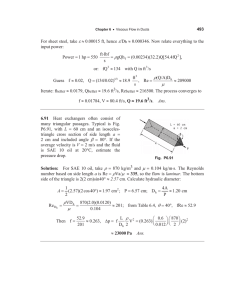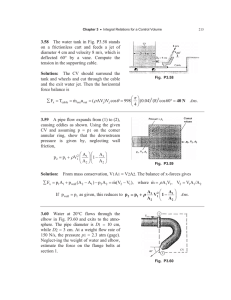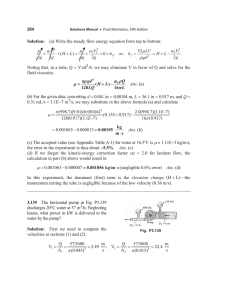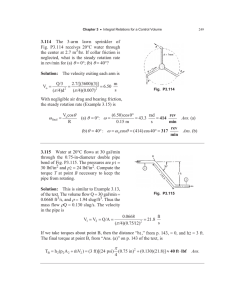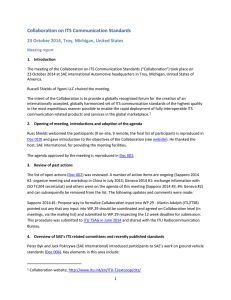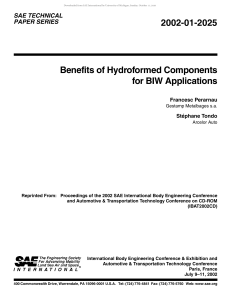4.86 parallel plates 8 mm apart, as in Fig. P4.86.
advertisement
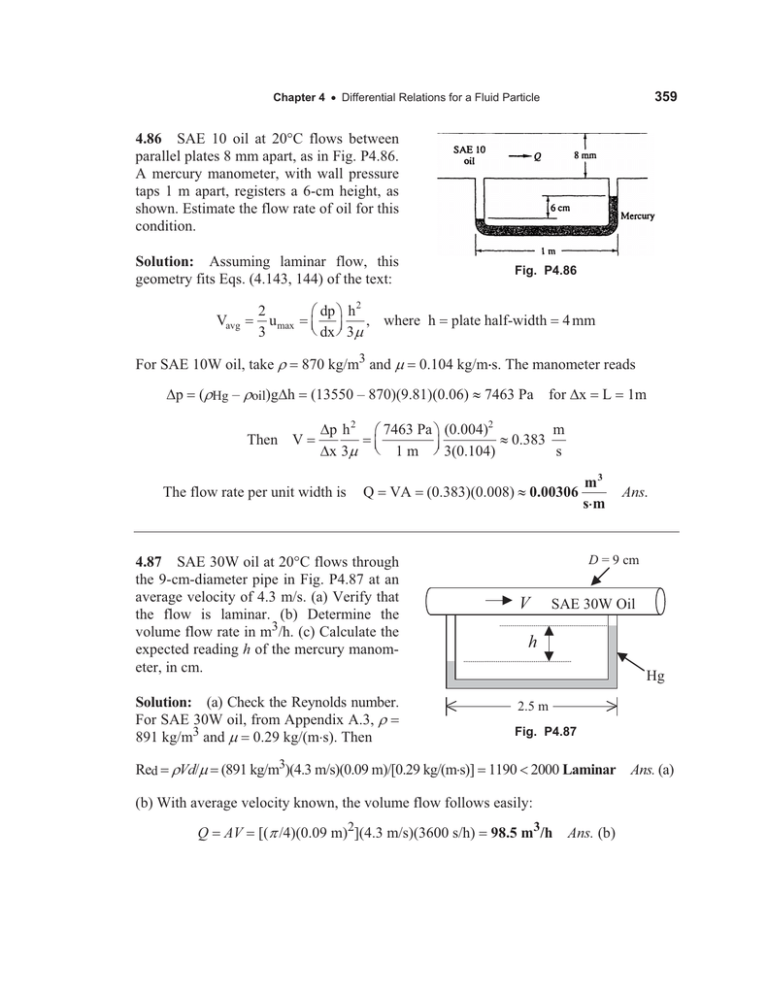
359 Chapter 4 x Differential Relations for a Fluid Particle 4.86 SAE 10 oil at 20qC flows between parallel plates 8 mm apart, as in Fig. P4.86. A mercury manometer, with wall pressure taps 1 m apart, registers a 6-cm height, as shown. Estimate the flow rate of oil for this condition. Solution: Assuming laminar flow, this geometry fits Eqs. (4.143, 144) of the text: Vavg 'p 2 § dp · h , where h ¨© ¸¹ dx 3P 2 umax 3 For SAE 10W oil, take U Fig. P4.86 870 kg/m3 and P (UHg – Uoil)g'h Then V plate half-width 4 mm 0.104 kg/ms. The manometer reads (13550 – 870)(9.81)(0.06) | 7463 Pa for 'x 'p h 2 'x 3P The flow rate per unit width is L 1m 2 m § 7463 Pa · (0.004) | 0.383 ¨© ¸¹ 1m 3(0.104) s Q VA m3 (0.383)(0.008) | 0.00306 s m 4.87 SAE 30W oil at 20°C flows through the 9-cm-diameter pipe in Fig. P4.87 at an average velocity of 4.3 m/s. (a) Verify that the flow is laminar. (b) Determine the volume flow rate in m3/h. (c) Calculate the expected reading h of the mercury manometer, in cm. Solution: (a) Check the Reynolds number. For SAE 30W oil, from Appendix A.3, U 891 kg/m3 and P 0.29 kg/(ms). Then Ans. D = 9 cm V SAE 30W Oil h Hg 2.5 m Fig. P4.87 Red UVd/P (891 kg/m3)(4.3 m/s)(0.09 m)/[0.29 kg/(ms)] 1190 2000 Laminar Ans. (a) (b) With average velocity known, the volume flow follows easily: Q AV [(S/4)(0.09 m)2](4.3 m/s)(3600 s/h) 98.5 m3/h Ans. (b)
